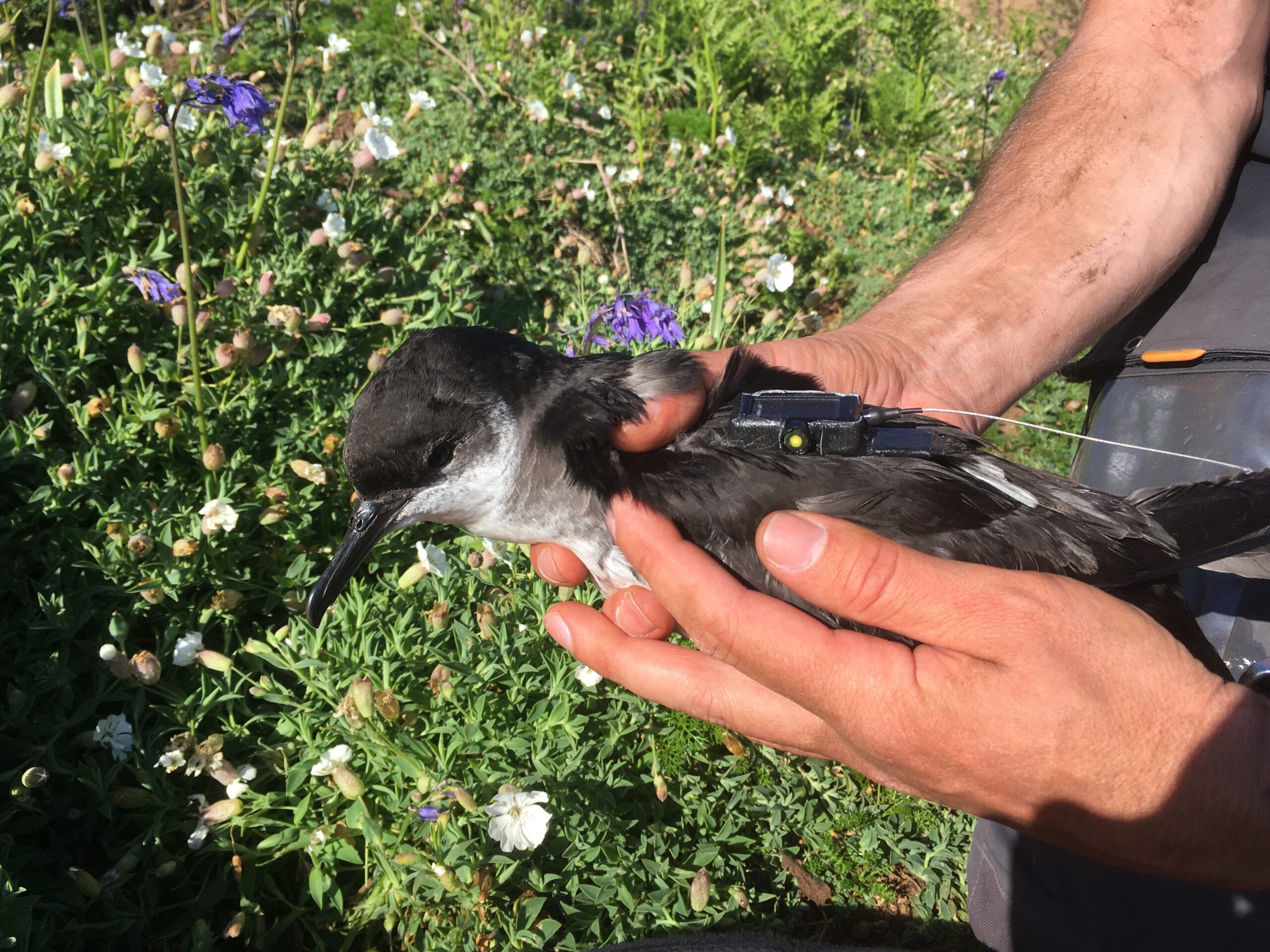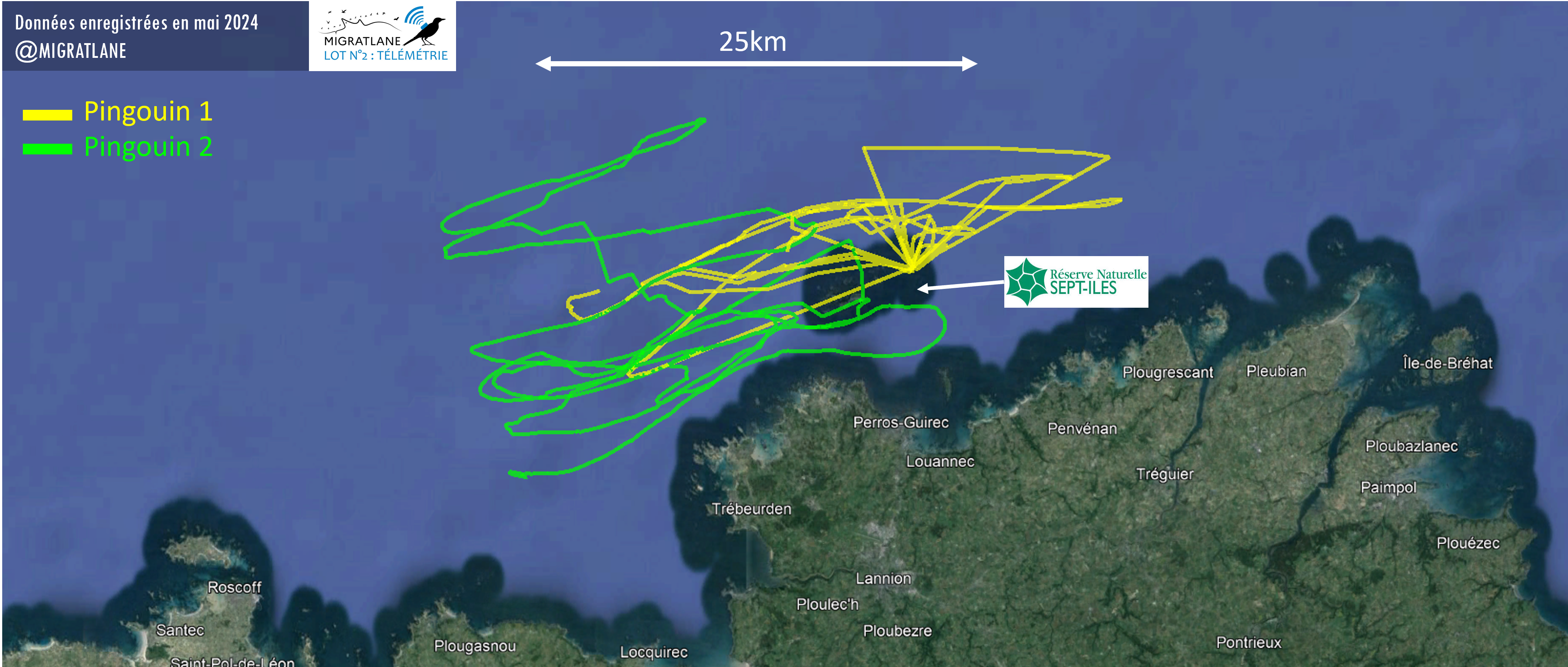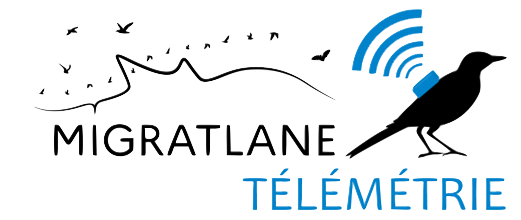This May, as in 2023, the MIGRATLANE team was welcomed to the Sept-Iles National Reserve (litterally “Seven Islands”), managed by the LPO.
Thanks to the Reserve team, 10 Manx Shearwaters were fitted with OT-9 GPS tags as they began their incubation period in their burrows. During incubation, male and female shearwaters take turns on their single egg and can make long foraging trips lasting several days at a time. Once the chick has hatched, both parents’ foraging trips will be slightly shorter, so that they can feed their offspring regularly. The Shearwater colony, mainly hosted on the Ile aux Moines and Ile Rouzic, is estimated at at least 200-300 pairs, and growing.


As well as the 10 Manx Shearwaters, the team also captured 2 razorbills from a boat, so as not to disturb the nests. Thanks to the tags they are carrying, we were able to establish that at least one of them appears to be a breeder, drifting back and forth between the open sea and its nest according to the tidal currents it uses to drift along the water, catching fish that come within range (yellow penguin 1 on the map).


The tags deployed on Shearwaters and Razorbills, as well as transmitting geographical position and flight altitude, also record the depth of dives (1 measurement per second during each dive). This invaluable data is in addition to that collected last year on the species, and will enable us to learn more about their feeding and resting areas during the breeding season.

The GPS devices attached to the birds’ back feathers will fall off in a few weeks, or at the latest in a few months when the birds moult. In 2023, one bird kept its beacon all the way to Argentina, where English shearwaters are known to feed in winter alongside many other species of seabird.
Many thanks to the team at the Reserve: Pascal, Armel, Grégoire and Tobie.

